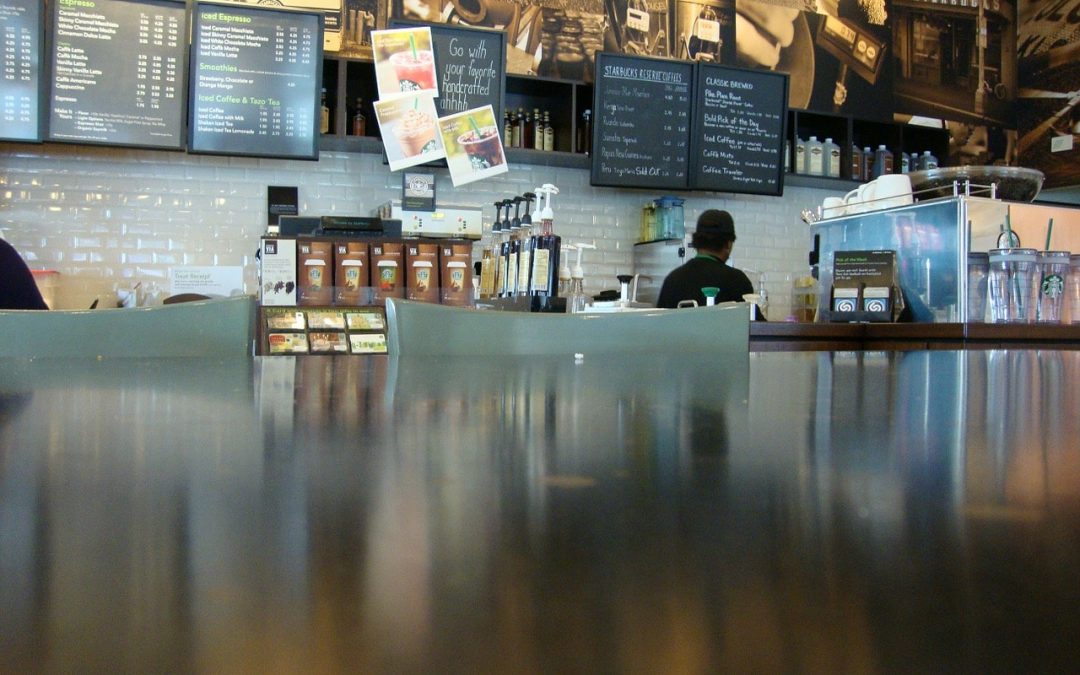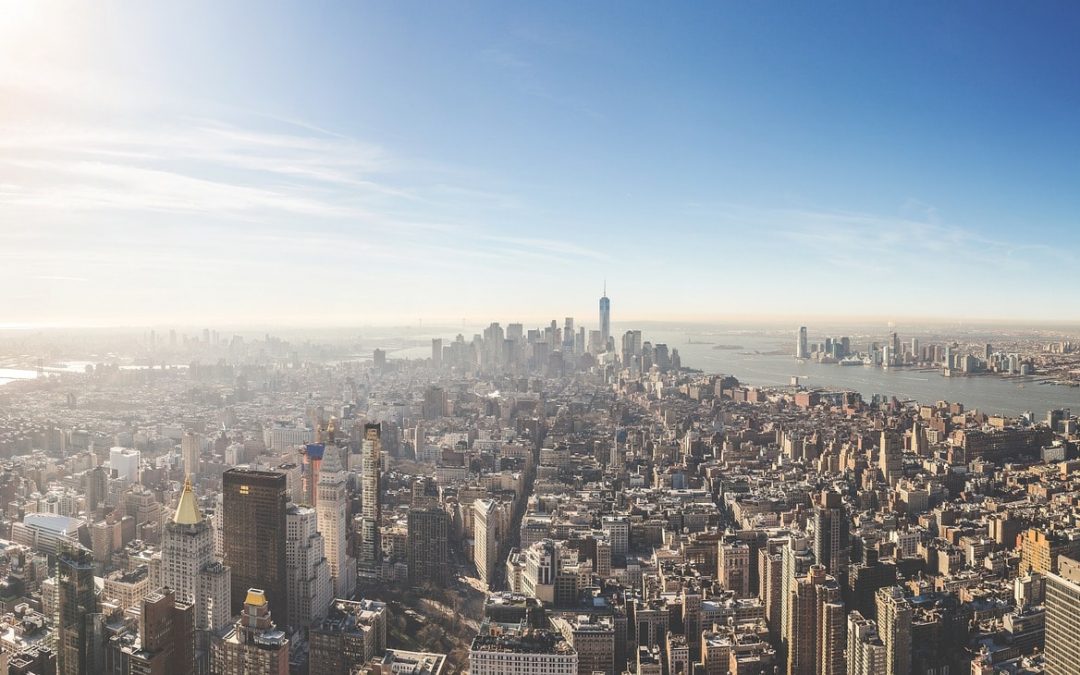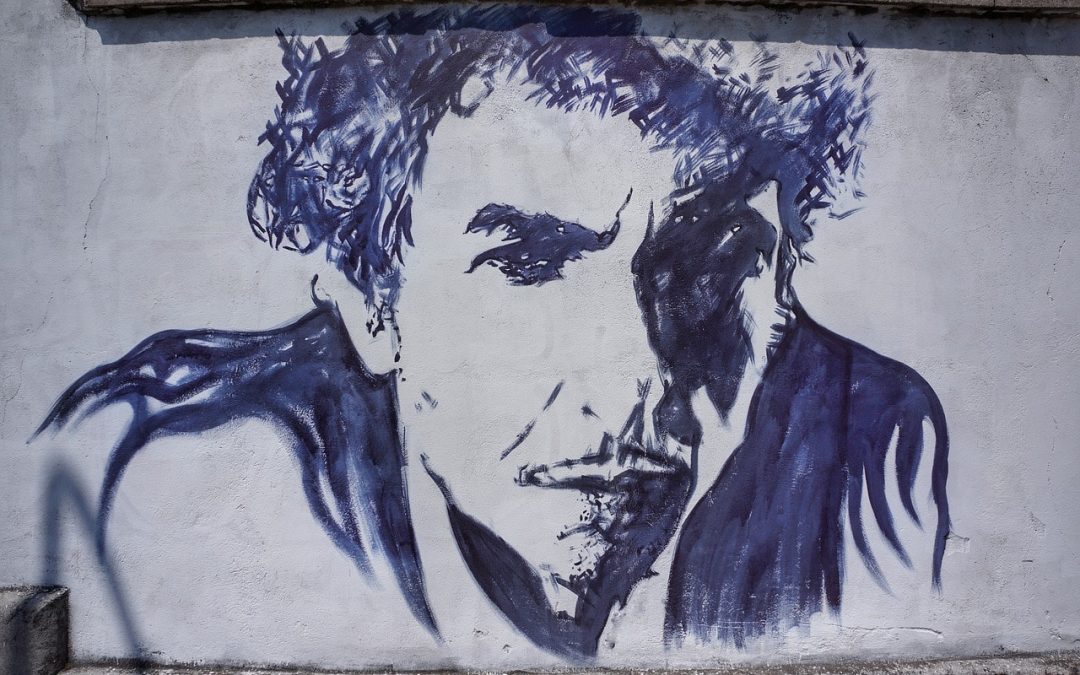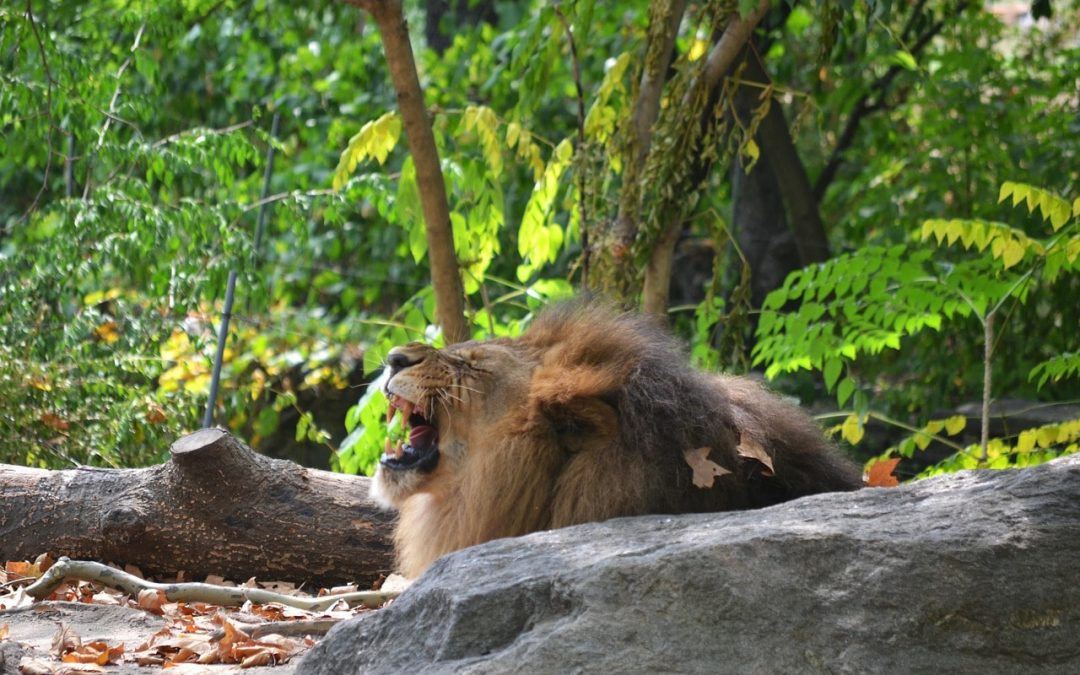
6 Things You Might Not Know About the NYC Marathon
We may be having an unseasonably warm autumn so far, but the most reliable sign of fall in NYC is right around the corner. On the first Sunday of November over 50,000 runners, from weekend warriors to international elites, will gather on the Verrazano Narrows Bridge to set off on the 47th Annual New York City Marathon.
The race, the largest marathon in the world, runs through all five boroughs over its 26.2 miles. Competitors will speed (or trot) through neighborhoods like Bay Ridge in Brooklyn, Queens’ Long Island City, and Harlem in Manhattan on their way towards the ending point in Central Park. This whirlwind tour of NYC is one of the city’s most beloved traditions, so whether you’re running this year’s race or watching from your couch, warm up with these fun facts.
- The First NYC Marathon Didn’t Leave Manhattan
In fact, it didn’t even leave Central Park! The 1970 inaugural race’s 127 entrants ran a series of laps around the park’s main jogging path until the 26.2-mile mark was reached. Out of those competitors, only 55 runners made it to the finish. The marathon didn’t run through all five boroughs until 1976.
- All 50 States are Represented
In last year’s race, not only were there at least 12 finishers from every state in the union, but over 150 countries worldwide were represented, from the 2700+ member Italian contingent to a lone runner hailing from Afghanistan.
- First Prize Has Come a Long Way
That initial year’s winner received a repurposed bowling trophy as their prize. Prestigious, to be sure, but not quite coming close to this year’s grand prize of $100,000. Entry fees have also grown since that first race, multiplying from $1 to $255-350.
- There’s a Wheeled Contingent as Well
Alongside those running the race, a sizeable number of competitors in wheelchairs participates in the race. Since 2000, this group has set out before the main group and covers the exact same ground as able-bodied runners, with added difficulty over cracks and inclines in the pavement. 5-time Women’s winner Tatyana McFadden will be seeking her 6th gold medal in this year’s race.
- Clothing Comes and Goes
Each year, runners shed approximately 26 tons of clothing as they begin to sweat in the first few miles. Volunteers gather these clothes and donate them to Goodwill. At least one competitor, by contrast, has created apparel during the race. David Babcock AKA “The Knitting Runner” has gained notoriety for knitting scarves during various races to raise money for Alzheimer’s research, and did so during the 2014 and 2015 NYC Marathons.
- The Late Founder Still Watches Every Finish
NYC Marathon creator Fred Lebow succumbed to brain cancer in 1994, but his presence still looms large at the end of every running of the race. A statue erected in his honor normally stands on Central Park’s East Drive at 90th street but is moved down to the finish line every year to watch over the celebration, forever in his jogging suit.

Food Enclaves of NYC: Jackson Heights
One of the most ethnically diverse regions in the entire country, Queens is unsurprisingly home to many tantalizing food options from many corners of the world. The South Asian enclave of Jackson Heights is no exception. This residential outerborough haven is home to some of the finest Indian, Bangladeshi, and Pakistani cuisine this side of the Ganges River.
If your experience of Indian food starts and ends with supermarket curry, let any one of these eateries be your introduction to a world of culinary delight. This walkable neighborhood (traffic and cramped streets can make driving here a hassle) is easily accessible by the 7, E, F, M, and R trains, as well as the Long Island Railroad.
Jackson Diner
This neighborhood institution was originally housed in a former greasy-spoon diner that often had trouble containing the visiting masses, with lines going out the door at times. Ownership has kept the name but moved into a more spacious location in the mid-90s to better suit the crowds their top-notch offerings attracted. For value, there’s no beating their lunch buffet, but anytime you’re hungry, you won’t regret the trip.
Samudra Vegetarian Restaurant & Chaat House
Don’t let the “v” word scare you away, carnivores, this eatery’s savory wares will have you forgetting all about those meat cravings. Samudra features high-quality portions at wallet-friendly prices, with rave reviews from locals and visitors alike. Try their Dosa (stuffed, crepe-like pancake with vegetable filling) or palak paneer (fresh cheese in spinach-based sauce) to get a taste of the subcontinent without leaving the five boroughs.
Maharaja Sweets & Snacks
Once you’ve polished off an entree (or two), talk a walk down 37th Avenue to this raved-about sweet shop. Stocked with brightly colored favorites like burfi and galub jamun, as well as homemade ice cream, this spot’s a feast for the eyes as well as the palate. Small bites are available too if you feel like grabbing an extra samosa for later!
Patel Brothers
If you can envision yourself craving the flavors of India quickly after leaving, but don’t look forward to a subway journey every time, stop by Patel Brothers grocery store before you leave Jackson Heights. This chain has all the cardamom, curry leaves, and basmati rice you need to take a stab at recreating the great meals you’ve had in the neighborhood. Don’t worry, if your homemade approximations don’t live up to your memories of Jackson Heights, these fine eateries will be happy to welcome you back.

Sandy Sidewalks: The Beach Escapes of New York City
This might be the city that never sleeps, but we certainly know how to kick back and relax every once in awhile. For summer sun by the sea, there’s no need to leave the five boroughs. Check out these 8 great beaches and see what the city has to offer at the edge of the land.
Rockaway Beach
Immortalized by the Ramones, you can take the A train, the Q35 bus, or the newly opened ferry line if you don’t feel like hitching a ride to Rockaway Beach. This surfer-friendly span runs adjacent to a beachfront community that wouldn’t look out of place further down the coastline, and the view of the Manhattan skyline on a clear day is the only sign that you’re still in NYC. Recent years have brought a wealth of DFD (Down For the Day-er, a local term for visitors)-friendly eating and drinking options right off the 5+ mile boardwalk.
Riis Park
Neighboring Rockaway Beach but featuring its own unique charms is Riis Park Beach, named for photojournalist Jacob Riis. For those on four wheels, this beach features a massive parking lot that gets remarkably close to full during summer weekends (parking on the streets in Rockaway is banned from May to September). New eating options at the Beach Bazaar right on the boardwalk have brought this beach into line with the other sandy shores of the area, and a pitch-and-putt golf course offers further reason to give this beach a look.
Orchard Beach
An oasis in the Bronx, Orchard Beach is the northern borough’s lone public beach. Usually bustling with activity during summer days, you’ll want to get there early for a prime spot near the water. On the weekend, be ready for blaring boomboxes to bring some rhythm to your relaxation. If that’s not your cup of tea, several nearby nature trails offer a quiet respite from the crowds and some enchanting views of their own.
Coney Island
NYC’s most famous (and crowded) beach, Coney Island has been a destination for New Yorkers since the 1830s. No longer the resort town it once was, this spot still is home to a wealth of entertainment options including the longtime favorite Cyclone rollercoaster and many new parks and rides, as well as a newly opened amphitheater that hosts a diverse number of performers from the Beach Boys to Daddy Yankee to the Violent Femmes. For the quintessential NYC beach experience, joining the crowd is well worth it.
Brighton Beach
For a less busy option just a few subway stops away from Coney Island, Brighton Beach has the boardwalk charm without all the noise. Food options nearby are mostly offered in Russian and Ukrainian, so many traditional favorites like borscht and potato dumplings can bring a touch of local (via Odessa) culture to your Brooklyn beach outing. The dense residential neighborhood connected to this beach makes this a unique place to spend your day by the shore.
South Beach
Called the “Riviera of New York City,” South Beach on Staten Island was given a facelift after suffering extensive damage from Hurricane Sandy in 2012. Now home to brand-new fountains, playing fields, and a spectacular view of the Verrazano Bridge, South Beach has become a destination for those who make the trip. Anglers can also take note, as the beach is home to an 835-foot fishing pier, one of the longest in the area.
Manhattan Beach
Don’t let the name fool you, this sandy spot is one of the furthest points from Central Park in the NYC area. This quiet, crescent-shaped beach at the bottom of Brooklyn, accessible by the B1 and B49 buses, is a destination mostly for locals and is a great spot for a picnic or barbeque. Adjacent tennis and basketball courts are open all year, so don’t hesitate to bring a ball and get a game started.
Jones Beach
To be fair, this one isn’t within the five boroughs, but it merits mention as one of the premier oceanfront spots in the NYC area. The six-mile-long beach on Long Island (accessible by car and the Long Island Railroad) is a fully-fledged destination, featuring golf, restaurants, and Renaissance-inspired architecture just off the sand. Memorial Day weekend brings the Bethpage Air Show to the beach, one of the largest in the United States. There’s so much to do here, you might want to get a room at one of the many nearby hotels and make a mini-vacation out of it.

Food Enclaves of NYC: Arthur Avenue
It’s become a cliche at this point to point out that Little Italy is littler than ever, and while it’s certainly true, that doesn’t mean that NYC is lacking for great Italian food. Those willing to take a trip up north to the Bronx neighborhood known as simply Arthur Avenue (after it’s main drag) are in for some of the finest traditional meals with a local flavor all their own.
Declared New York’s best food neighborhood by Esquire Magazine, the area also called Belmont features a long history of Italian-American culture from immigrants who came here in the early 20th century. Like its more famous equivalent in Manhattan, this cozy neighborhood might seem a little closed to outsiders at first, but after taking your first bite in one of these fine eateries, you’ll feel like family.
Antonio’s
A short walk off of Arthur Avenue, away from the tourists, should take you to this local favorite where the meats are plentiful and cooked to perfection. They might be best known for their falling-off-the-bone short ribs, which come smothered in rich sauce that could have come from any number of area grandmother’s kitchens.
Roberto’s
A favorite of the celebrity crowd, Robert Paciullo opened his two-floor trattoria which features a rotating menu of top-quality, Michelin Guide-approved dishes. Come in one night for tender risotto with cuttlefish, come back tomorrow for the tender braised rabbit. If you’re like most diners, you’ll stick around for one of Roberto’s signature desserts as well, like sbricolata crumb cake with amaretto, or his old country-style tiramisu.
Mike’s Deli
For those days when you’re not feeling as fancy, you can take in a lunch at this marketplace where the eggplant parm is a year-round hit. The owners also run the neighboring Bronx Beer Hall if your group is looking to follow up your sandwiches with some craft suds. Mike’s olives and burrata are a must-try.
Vincent’s Meat Market
For a taste of Belmont that you can take home with you, visit Vincent’s Arthur Avenue storefront for all the smoked meat, sausage, and custom beef cuts your carnivorous heart desires. Open for over 60 years, Vincent’s always-fresh meats, expert customer service, and worth-the-trip prices all make it clear why they’ve been the neighborhood’s top butcher for all these years.

How NYC Neighborhoods Got Their Names
Any New Yorker can tell you that this is a city defined by its wide variety of neighborhoods. Across all the boroughs, every distinct enclave has its own character and personality, not to mention history. Making your way in and around the city starts with a working knowledge of its diverse assortment of neighborhoods.
Founded as a Dutch colony, many of New York City’s neighborhood names date back to that time. The Dutch may have left after the British took control of the city and renamed it from New Amsterdam, but labels such as Brooklyn and The Bronx (derived from the Dutch names Breukelen and Bronck) still remain as reminders of the city’s roots. Not surprisingly, many neighborhoods retain the names they’ve had since those early colonial days.
Harlem
A cultural touchstone not just for the city but for the entire United States, Harlem is one of New York’s best-known neighborhoods. This home of legendary artists, poets, and attractions like the Apollo Theater and the Cotton Club was once an outpost for Dutch settlers who needed a space to stay far from New Amsterdam at the southern tip of Manhattan island. This safe haven was dubbed Nieuw Haarlem by Governor Peter Stuyvesant, after the Dutch city a short distance from the original Amsterdam. Once the Dutch left New York, the name was anglicized to just “Harlem.”
Astoria
Many streets of New York, such as Dyckman in Upper Manhattan and Schermerhorn in Brooklyn, were named for wealthy denizens of the area, whose properties defined those surroundings. For someone with the fortune of John Jacob Astor, just a street wouldn’t suffice. The neighborhood formerly called Hallett’s Cove was never actually home to the fur trader or his family, but given the label in order to attract him to invest in the Queens district. It didn’t quite work (he only invested $500) but the name stuck.
Red Hook
This maritime district has always been defined by the port and shipping that made Brooklyn one of the country’s busiest regions. Red Hook comes from the Dutch “roode hoek,” referring to the red clay soil of the neighborhood (long since buried under concrete roads) and the geographical point jutting out into Upper New York Bay. Interestingly enough, the “hook” of Red Hook refers to the Dutch word for “point” or “corner,” not any actual hook-like geographical feature.
Coney Island
It wasn’t only geographical features that inspired Dutch settlers in naming their new territories. This former beachfront getaway, home to the famed Cyclone and Wonder Wheel, got its name from the Dutch word conyne for “rabbit” after the wild rabbit population that lived on what was then an actual island, with a river separating it from the mainland. Shifting sediments attached the island to the rest of Brooklyn while rifle-toting settlers did away with the rabbits, but the Coney Island name remains.
Turtle Bay
Unlike Coney Island, this neighborhood wasn’t identified by any animal population. Rather, Turtle Bay got its name from the Dutch word deutal, or knife. Early settlers of the bay (which was filled in after the Civil War, allowing for further buildings eventually including the United Nations complex) noticed a resemblance to a bent knife and named the bay accordingly. Thanks to its proximity to the UN, Turtle Bay is now home to many foreign consulates, making it one of the more plainly diverse regions of the city.
Rockaway
The Dutch weren’t the only ones who gave names to the various neighborhoods of the city. Several of them, in fact, descend from the language of the Lenape tribe, the area’s indigenous inhabitants. Queen’s beachfront peninsula, a distinct part of the NYC map, got its name from the old Lenape word “rack-a-wakee,” whose meaning is not certain but is thought to mean “place of sands.” Also behind the names of Canarsie in Brooklyn and of course Manhattan, this language is one of many that makes New York City the unique melange of cultures famed worldwide.

6 Iconic NYC Transplants
Not every famous New Yorker grew up in the five boroughs. One of the things that make this city special is its ability to attract the best, brightest, and most interesting people not only from across the country but around the world. This city has a powerful draw on people who are looking to make an impact in a variety of fields, from music to fashion to fine art. These are just six of the many transplants who left their hometowns to become a part of it all in the Big Apple.
Bob Dylan
He’s got walking tours dedicated to his New York history, and more than one Greenwich Village venue has become iconic thanks to hosting him in his early days, but Bob Dylan originally hailed from a spot over 1,000 miles away from those vaunted corners. The man most closely associated with the city’s mid-century folk scene was born Robert Zimmerman in Duluth, Minnesota, and came to the city in 1961. His music belongs to the world now, but it developed into the voice of a generation here in NYC.
Diane von Furstenburg
NYC’s status as a fashion capital wouldn’t be possible without the global assortment of talents that flock here to make their names known, one of the biggest of which is this former Princess. Born in Belgium, Diane von Furstenberg attended fashion school in Geneva and Madrid before making the big move across the Atlantic. Once she arrived in New York she quickly made a name for herself with her iconic wrap dress, and since then her name has been worn by the likes of Michelle Obama and the Princess of Cambridge.
Andy Warhol
Art is one of New York’s greatest attractions, with countless galleries and museums filled with works of global importance that touch every corner of the mind. Andy Warhol’s ruminations on fame and image defined the pop art movement and made him an international figure and the ultimate New York tastemaker. Warhol was born and raised in Pittsburgh, Pennsylvania, earning his degree in design from Carnegie Mellon University before he moved to NYC to start a career as an illustrator. Today, his native town is home to the Andy Warhol Museum, but the streets where he became a legend are right here in New York City.
Sean Combs
The rap impresario who “ran the city” in 2003 and jump-started the careers of beloved artists like the Notorious B.I.G. and Mary J. Blige is one of the foremost musical icons of the city, with his Bad Boy Records headquartered right up the block from Times Square. Although technically born in Harlem, Sean “Diddy” Combs” grew up just outside the city in Mount Vernon. He quickly made his way into NYC with an internship at Uptown Records in his early 20s though, and the rest is hip-hop (and New York) history.
Mike Bloomberg
It’s hard to get any more accomplished in NYC than being elected mayor, but even before that Michael Bloomberg had made a name for himself as a financial entrepreneur, with his Bloomberg financial terminals in every financial office across the country. The billionaire businessman’s origins are north of the city in the greater Boston area, where he grew up before coming to the city to work on Wall Street. Bloomberg famously stood by his guns as a loyal Red Sox fan during his tenure as mayor, taking the ire of Yankee fans in stride.
Frank Sinatra
He might be best known for the famous ode “New York, New York,” but as any true fan of old blue eyes can tell you, he was born and raised across the river in Hoboken, New Jersey. Young Frank spent his days honing his beloved singing voice in clubs across the Garden State before selling out packed houses like NYC’s Carnegie Hall and the Paramount Theater. He’s still a New York icon today, with a performing arts high school in Astoria, Queens bearing his name.

The Bronx Zoo: A History
In the midst of the country’s foremost urban jungle, an oasis of plants and wildlife collected from around the world has thrived for over 100 years and counting. The Bronx Zoo is one of the city’s crown jewels, attracting over 2 million visitors to the northernmost borough every year. In a city best known for gridlock and nonstop action, the zoo has been a haven of intrigue and discovery for several generations of New Yorkers.
The Bronx Zoo’s story began in 1895 as the brainchild of the newly formed New York Zoological Society (now known as the Wildlife Conservation Society). The society came together with the explicit aim of building a top-quality zoo to complement the city’s celebrated museums and parks. Work soon began on identifying an appropriate site with enough space but not too far for city residents to visit.
By 1898, the newly consolidated City of New York allotted a plot of land in the Bronx to become a wildlife preserve and the following year the New York Zoological Park opened at the Fordham Road site. It was an immediate sensation, attracting thousands of curious guests to see the 843 animals on display. Today, that number has grown to over 4,000 representatives of more than 650 different species, still capturing imaginations of visitors young and old.
The zoo was among the first to consider exhibiting animals outside of restrictive cages, opening their African Plains showcase in 1941, a new kind of exhibit where animals freely intermingled and explored a recreation of the serengeti. This groundbreaking exposition not only offered a thrilling naturalistic display but imparted visitors with an understanding of the importance of preserving animals’ native habitats. The zoo’s Wild Asia did the same thing in an Eastern setting starting in 1977, with 77 acres of roaming space viewable by elevated monorail.
Over the years, the zoo has been home to some truly rare specimens. It’s only one of two zoos in the United States to have exhibited the thylacine, a now-extinct doglike marsupial from Tasmania. Their last thylacine died in 1919, and the species’ last known individual died in captivity in 1936.
Perhaps the zoo’s best known species have been their snow leopards, first exhibited in 1903. Over 70 of the endangered white cats have been bred at the Bronx Zoo, making it their foremost sanctuary in the United States. They’re far from the only rare species to call the zoo home, however, with Chinese Alligators, Kihansi Spray Toads, and Yellow-Headed Box Turtles all calling the Bronx their birthplace over the years.
The successful 20th century effort to revive the American Bison has much to owe to the zoo as well. The zoo’s original director William T. Hornaday cofounded the American Bison Society in 1905, and set about breeding the animal in the Bronx Zoo’s confines. Two years later, the zoo was able to send 15 bison to a preserve in Oklahoma, where a thriving colony exists to this day.
The zoo boasts some remarkable non-animalian features as well. The famed Rockefeller Fountain on the park’s north side, brought to the United States from Como, Italy by oil baron William Rockefeller, is a designated New York City Landmark, as are the bronze Rainey Memorial Gates decorating the zoo’s north entrance. Architectural enthusiasts will also appreciate the historic beaux-arts buildings of Astor Court, including the Elephant house and the zoo’s main administrative building.
In a city that boasts soaring buildings and cutting edge works of art, there’s no experience quite like the thrill and wonder housed in the 250 acres of the Bronx Zoo. Whether a leisurely visit or a lifetime residency, no time spent in New York City is complete without visiting the city’s wildest residents.

What Amazon’s Rise Means for New York City
Amazon has changed the way we shop, but two Amazon products will change the face of New York City as we know it — and they’re not what you might expect. As much as we’ve seen Amazon innovate online, the tech giant is also changing the way we shop for basics, and that impacts local stores in every neighborhood. The issue is, of course, that mom-and-pop stores will have trouble competing with the pricing Amazon secures through the sheer quantity it sells. When looking at Amazon and its effect on brick-and-mortar stores, the company’s rise is likely to both threaten and encourage the shops that line our city streets.
First, here’s what Amazon is bringing back from the past. Remember bookstores? When Amazon Books announced its first NYC location on Columbus Circle, not only New Yorkers were skeptical. Books, printed on paper? Sold in an actual building? It seemed so…analog. Inside Amazon Books, the shelves are actually set up and stocked based on the online data collected from customers everywhere, so it’s a mix of both. The location was chosen based on data including the purchasing habits in the neighborhood. There must be a lot of Kindle owners on the west side! The next location will be at 7 W 34th Street.
One interesting aesthetic detail is the store places its books with the cover facing out. This is the way you would see the book online, but it’s also a pleasant surprise compared to the library style of a row of book spines. Somewhere, book designers are rejoicing. It’s all set up to encourage shoppers to come into the store and spend time using a mix of information and intuition to buy. Something is charming about bringing bookshops back to the city. What this means for the neighborhood is more foot traffic and a destination for shopping which could encourage related businesses to establish themselves nearby.
There could be another effect of the arrival of Amazon Books. As a massive store, Amazon can set trends. Smaller, beloved bookstores of New York could potentially benefit from the rise of book shopping. What if book readings and poetry nights could actually receive a boost from the competition? Amazon Books, in bringing back the bookstore, might revitalize a whole reading culture again. The New York Public Library will always be great, but books can use all the help they can get.
The other product that will change the face of New York City is Amazon Fresh. There are many home grocery delivery services, and even entire home meals pre-packaged and delivered ready to cook from companies such as Blue Apron. But New York is still a city of bodegas and corner delis. Amazon, with its recent agreement to purchase Whole Foods, is going to own a significant share of the food business. Small shops will have to be more gourmet, specialty, or stand out in other ways.
Farmers markets are another business that could be impacted by Amazon. Shopping locally is especially important at these markets, because it supports the people who grow the produce and make the foods directly. Here’s a list of NYC farmer’s markets that can be sorted by day and area so you can find one nearby. Some of these local businesses may already be online, but they will have to compete with online ordering more and more each year.
What will really cause a change in New York’s streets could be the way all shops function. Amazon loves to use data to make suggestions to customers, enabling customers to shop. Currently, AmazonFresh lets people select items online which are delivered to their doorstep. n neighborhoods without much fresh organic produce, this could be extremely beneficial to people’s health. If people get in the habit of shopping from home for essentials, they may stop going out for groceries at all.
One certain downside? Amazon’s takeover is unlikely to be beneficial for jobs. Grocery stores operated by Amazon will probably be heavily automated, letting people scan and check out without ever speaking to a person, or simply driving by to pick up pre-selected items. Isn’t part of New York’s charm the surly shopkeeper, the friendly butcher, the always-there bodega owner? This balance of convenience and human contact is difficult to achieve. New York will have to think carefully about how to preserve neighborhood shops, which define our streets and have become a part of our daily lives.

The Best-Ever Theme Bars in New York City
New York is a mix of cultural influences and has seen the rise and fall of many creative eras. The best theme bars either retain an element of old New York and make it the focal point, or transport the bar hopper to another place entirely. Here are some of the best places for a night out on the town, though you might forget where you are.
Beauty Bar
231 East 14th St
Salons are a place for gossip, and so are bars, so the proprietors of this chain put the two concepts together for a successful bar/beauty parlor. For $10 the manicure and martini special is just that. Open since 1995, the bar has comedy nights and other shows. It is especially popular for women having bachelorette parties. Now with locations across the river in Brooklyn and across the US including San Francisco, Las Vegas, Chicago, Denver, and Dallas.
Reunion Surf Bar
357 West 44th St
Named for the island Ile de la Réunion off the coast of Madagascar, the space is full of surf influence and island drinks. Christmas lights adorn the ceiling, pineapple slices adorn the drinks, and surfboards are posed as decoration in every nook. The owners include a musician and a former handyman, but both their business profiles start with their favorite surf breaks. The sister restaurant Playa Betty’s (320 Amsterdam Avenue) serves California style tacos and beach food.
Slaughtered Lamb Pub
182 West 4th St
A werewolf themed bar…spooky! Complete with a werewolf lounge and dungeon, this English style pub is named after the historic London pub of the same name where allegedly werewolves roamed.
Trailer Park Lounge & Grill
271 West 23rd St
The Trailer Park Lounge announces proudly that it was voted one of the top five kitschiest restaurants in America by the Food Network. It serves hamburgers, fries, and other staples of the American diet. Every wall is decorated with vintage items that would fit in not only in a trailer park but also in the 1950s. The burger & beer lunch special is just under $14.
The Rusty Knot
412 West St
Water surrounds New York City, so it’s only fitting to include a couple of maritime themed bars. Drinks on the limited menu are fit for a sailor, with a pickle back, dark & stormy, mai tai, singapore sling…you get the idea. Food is basic chips and tacos, because food is not the point.
The Ship
158 Lafayette St
A cocktail lounge with a different nautical theme, this space is all sleek metal and quiet booths made from sails, ideal for small groups. The menu includes chicken liver foie gras, homemade ricotta, and vegetable tartine. Drinks are sophisticated with one called the Bartender’s Choice, a surprise drink for those in the mood for adventure at sea.
Gotham City Lounge
1293 Myrtle Ave
A comic book themed bar with a secretive lack of web presence. Their Twitter is the best way to find out about movie nights, discounts for voting, and other community events.
Otto’s Shrunken Head
538 East 14th St
This tiki bar points out on their website, “Manhattan is after all, an island.” They serve rum drinks and no food, except for the occasional BBQ or food contest. The signature drink comes in a custom tiki mug, and other beverages include a flaming bowl and a selection of drinks served in tiki glasses that can be taken home for an extra charge.
Burp Castle
41 East 7th St
A “temple of beer worship” and place for fans of Belgian and other beers to find unusual favorites. The tap list changes frequently and the best way to find out what is being served is to ask. Free pomme frites are served during happy hours. It’s a community environment, with meetings of the New York City Home Brewers Guild held here, but it’s not for parties. Bartenders are known for shushing the crowds to encourage more focus on the beer.

Zaha Hadid’s Legacy Piece
Her acclaimed mergings of expressive form and robust functionality grace the world from Zaragoza to Guangzhou. Across a nearly 40-year career, Zaha Hadid established herself as a premier creator of architectural elegance before her untimely passing in 2016. Her legacy, however, will live on in New York City in the newly finished 520 West 28th Street in Chelsea. Overlooking the High Line, this building merges timeless views and state of the art amenities to stand tall in the city’s high rise luxury scene.
Hadid’s elegant creation counts among its neighbors not only the repurposed elevated rail line, but cutting edge Hudson Yards development, the perpetually trendy Meatpacking District, and the Whitney Museum. But as usual for Hadid, the most intriguing aspect is what’s inside. No luxury was too extravagant for this apartment building, which boasts amenities such as NYC’s only private 3D IMAX theater, a skylit 75-foot swimming pool, and a fully automated parking garage.
The luxury building is limited to 38 exclusive units, with rooms designed by Hadid that evoke the sleek minimalism of the surrounding area’s cutting edge art galleries. Not to be outdone by those neighbors, the building’s ground floor will host it’s own 5,000 square foot gallery. Complementing the “High Line Nine” galleries being completed this year, 520’s gallery will host the latest branch of the acclaimed Paul Kasmin Gallery, one of New York’s finest purveyors of visual
Though she is sadly unable to see it in person, Zaha Hadid’s first and only large-scale New York City project will serve as an enduring capstone to an untouchable architectural legacy. This masterwork of residential splendor will be the last of a long line of forward-thinking achievements. In a metropolis filled with rich experiences, 520 West 28th Street’s stunning facade and luxe interiors confirms the best of the city is only just arriving.
